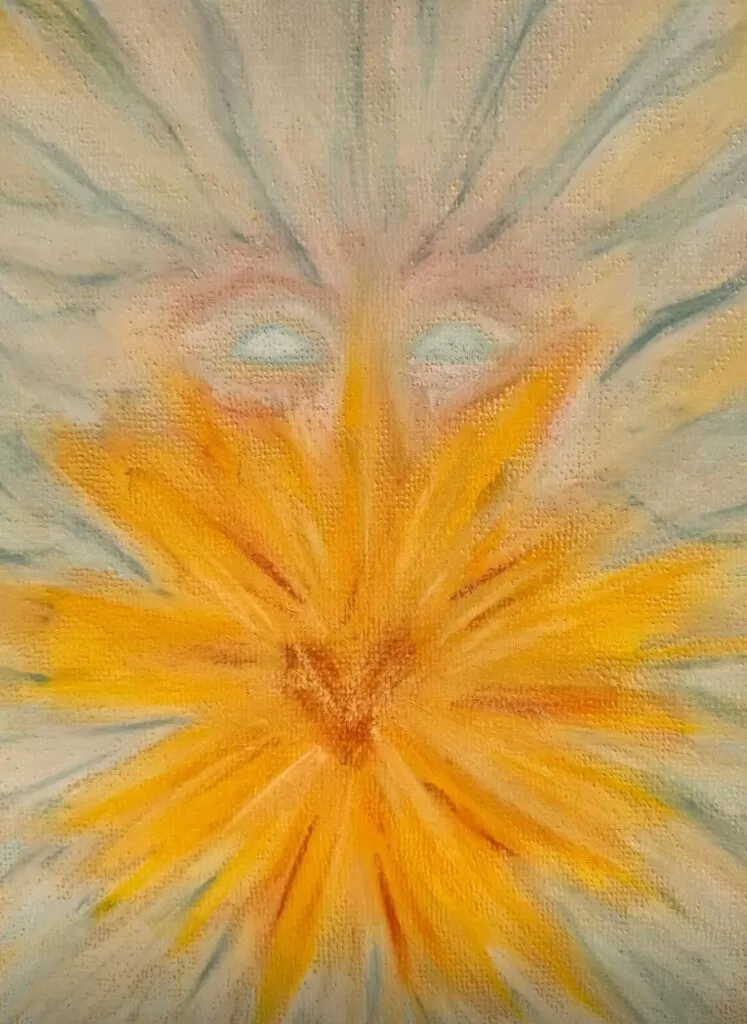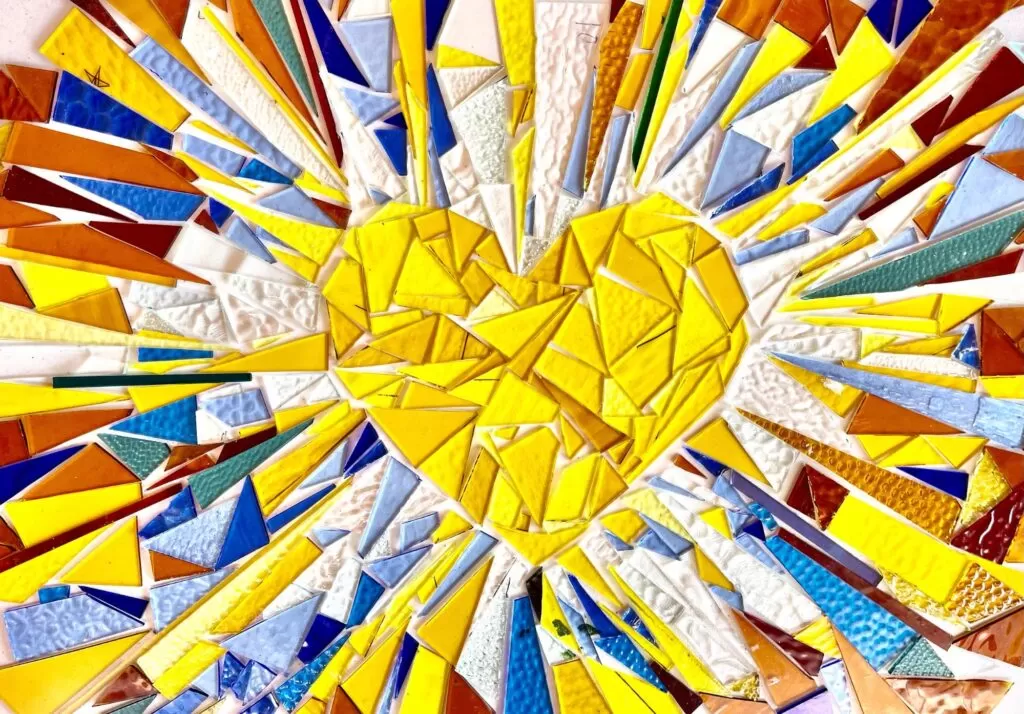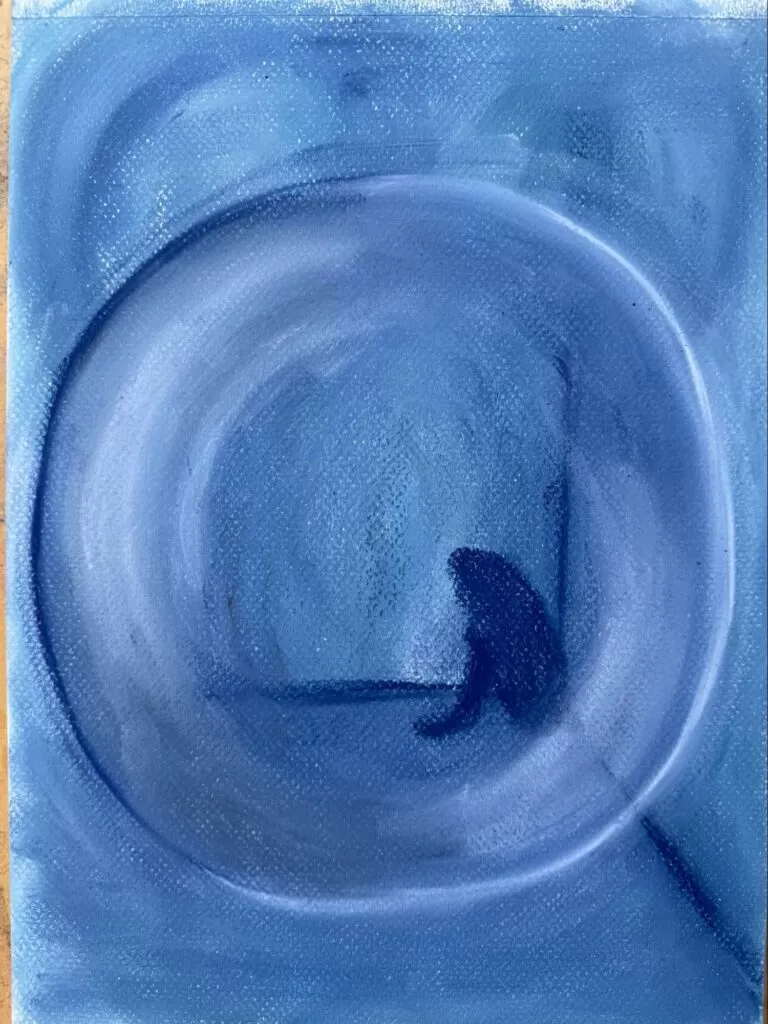Healing Through Creativity: How Art Therapy Supports Grief
My mum passed away in 2009. I remember it so vividly that sometimes it feels like it happened just yesterday. I was traveling at the time, having just returned from the countryside of Kyrgyzstan, re-entering civilization to check my emails. That’s when I saw it—an email with the subject line: Call home.
I already knew. It wasn’t expected, but I had seen her in my dream the night of my birthday. She was letting me know she was leaving me.
Time stood still. The shock hit first, then the pain in my chest, and the tears of despair. A sorrow deeper than I had ever known.
I had to stop my journey and go home. I had to face the reality of losing her. But in those days, I remember feeling almost superhuman—taking care of everything without showing emotion. There was no time for grief.
She passed away on my birthday, a day I also shared with her partner. I tried to find the irony in it, to make sense of why she left on that day of all days. But no logic could soften the weight of it.
That whole period of my life became a blur. Life moved on quickly. I got married, had my first child, bought a home, then had my second son. Life kept rolling forward, and I buried my grief so deep that even I started to believe it wasn’t there.
But every birthday, it resurfaced. A heavy heart, an ache I hid behind a smile. One year, I even forgot entirely. Days later, the realization hit me, and the guilt was unbearable. How could I forget? What kind of daughter was I to let that day pass unnoticed? The weight of it crushed me.
It wasn’t until 2022 that everything finally came crashing down. The grief I had ignored for so long rose like a tidal wave. I was angry. I was sad. And I found myself asking—why had no one, not even those who knew, ever asked how I was feeling on this day? I wanted to scream it to the world. So I did. I told them all.
Then, I cried. And at last, I was ready to feel it all—to grieve, to forgive, to honor her for who she was and still is to me.
During that time, I created a mosaic table—a large, radiant yellow heart, shining bright and strong. A symbol of love, resilience, and healing. As I worked on it, piece by piece, something inside me shifted. The sharp edges of broken tiles mirrored the rawness of my grief. But as I arranged them, I saw something new taking shape—beauty in the brokenness.
Through art, I found a way to express what words never could. Creativity became my path to peace.


How Art Therapy Supports Grief
Grief is complicated. It doesn’t follow a timeline, and it doesn’t always show up the way we expect. Sometimes, it hides deep inside us, waiting for the right moment to surface. Other times, it lingers just beneath the surface, affecting us in ways we don’t fully understand. For me, it took over a decade before I truly allowed myself to feel it.
That’s the thing about grief, it needs expression. And sometimes, words just aren’t enough.
Art therapy offers a way to process grief without needing to explain it. It gives emotions a space to exist, to take shape, to be seen and felt in a way that feels safe. When we create, we allow ourselves to connect with feelings we might not even realize we’ve been carrying.
For me, that connection came through mosaics. The breaking, shaping, and placing of each piece became a part of my process and of my healing, of taking something shattered and creating something whole.
But art therapy isn’t about being good at art; it’s about using creativity as a tool for expression. Whether painting, drawing, sculpting, or even scribbling on a page, every mark we make has meaning.
Ways Art Therapy Can Help Process Grief
Expression Beyond Words
When grief is too heavy to put into words, art becomes a voice. Colors, shapes, and textures can express sadness, anger, love, and memories in a way that feels natural and personal.
Creating a Safe Space
Making art allows us to process emotions at our own pace. There’s no pressure, no right or wrong, just a space to let feelings exist without judgment.
Physical Engagement
The act of creating is grounding. The movement of a brush, the feel of clay, the rhythm of cutting and arranging pieces—it brings us into the present moment, helping to release emotions stored in the body.
Symbolism and Connection
Art helps us honor our loved ones in a meaningful way. A painting, a sculpture, a collage—each creation can carry a memory, a message, a connection that keeps their presence alive.
Transformation Through Creativity
Just like grief, art is a process. It evolves. What starts as a chaotic mess can transform into something beautiful, just as we slowly learn to live with loss in a new way.


Ways to Use Art to Navigate Grief
If you’re grieving and not sure where to start, here are a few simple ways to use creativity as a form of healing:
- Mandalas for Reflection: Drawing or coloring mandalas can be a meditative way to process emotions. Each shape and color can represent a feeling, creating a visual representation of your inner world.
- Memory Collage: Collect photos, letters, or small objects that remind you of your loved one and arrange them into a collage. It’s a way to honor their presence and keep their memory alive.
- Journaling with Images: If writing feels too heavy, try combining words with simple sketches or abstract shapes. Let the images express what words cannot.
- Clay or Sculpture Work: Working with clay can be incredibly grounding. Sculpting something with your hands can help release tension and connect with emotions tactilely.
- Movement-Based Art: Sometimes, grief feels stuck in the body. Try painting with large gestures, using your whole arm to create sweeping movements. This can help release emotions that words or stillness cannot.
For me, the yellow heart in my mosaic became more than just an artwork—it became a symbol of love, strength, and healing. A reminder that grief and joy can exist together. That even in loss, there is light.
Final Thoughts
If you’re navigating grief, I encourage you to explore creativity in whatever form feels right. Not for the outcome, but for the process. You don’t need to be an artist. You don’t need to have a plan. You just need a willingness to sit with your emotions and let them take shape.
Grief is not something to be “fixed.” It’s something to be felt, honored, and expressed in a way that makes sense to you. Art allows us to do that, it gives grief a voice when words fail.
So, if you’re holding onto something heavy, pick up a brush, a pencil, a handful of clay, whatever calls to you. Let it flow. Let it speak. Because sometimes, healing isn’t about finding the right words; it’s about letting yourself create, feel, and simply be.
Want to explore art as a way to navigate grief?
If this resonates with you and you want to explore art therapy as part of your healing journey, I’d love to support you. Feel free to reach out or visit creativejourneys.com.au to learn more about how art can be a powerful tool for processing emotions.





Promote our products and earn real money—apply today! https://shorturl.fm/DzXB1
Promote our products and earn real money—apply today! https://shorturl.fm/A66zG
Share your unique link and cash in—join now! https://shorturl.fm/GEKty
Share our products, earn up to 40% per sale—apply today! https://shorturl.fm/BdLlg
Earn recurring commissions with each referral—enroll today! https://shorturl.fm/P0iYr
Apply now and receive dedicated support for affiliates! https://shorturl.fm/d9TQr
Start earning on every sale—become our affiliate partner today! https://shorturl.fm/ExVn7
Grow your income stream—apply to our affiliate program today! https://shorturl.fm/GOnM7
Share your unique link and earn up to 40% commission! https://shorturl.fm/Rx7ud
Promote our brand and watch your income grow—join today! https://shorturl.fm/neJld
Share our products, earn up to 40% per sale—apply today! https://shorturl.fm/BaeRt
Refer friends and colleagues—get paid for every signup! https://shorturl.fm/wBbzk
Partner with us for generous payouts—sign up today! https://shorturl.fm/deh5C
Start earning on every sale—become our affiliate partner today! https://shorturl.fm/zgslP
Become our partner and turn referrals into revenue—join now! https://shorturl.fm/eUfak
Get started instantly—earn on every referral you make! https://shorturl.fm/qtNqc
Get rewarded for every recommendation—join our affiliate network! https://shorturl.fm/eSJCw
Unlock top-tier commissions—become our affiliate partner now! https://shorturl.fm/GTbuh
Refer friends, collect commissions—sign up now! https://shorturl.fm/fmnEx
Boost your income effortlessly—join our affiliate network now! https://shorturl.fm/nG9LS
Start earning instantly—become our affiliate and earn on every sale! https://shorturl.fm/AuyHW
Promote our brand and get paid—enroll in our affiliate program! https://shorturl.fm/k3YgA
Drive sales, collect commissions—join our affiliate team! https://shorturl.fm/rKlRf
Turn your audience into earnings—become an affiliate partner today! https://shorturl.fm/7p2oo
Drive sales, collect commissions—join our affiliate team! https://shorturl.fm/lXPMT
Turn traffic into cash—apply to our affiliate program today! https://shorturl.fm/iASoL
Join our affiliate community and earn more—register now! https://shorturl.fm/1Jfq3
Monetize your influence—become an affiliate today! https://shorturl.fm/v7HC3
Join our affiliate program today and start earning up to 30% commission—sign up now! https://shorturl.fm/Fb89R
Share our products, earn up to 40% per sale—apply today! https://shorturl.fm/M7xl1
Earn recurring commissions with each referral—enroll today! https://shorturl.fm/ghqZL
Start profiting from your traffic—sign up today! https://shorturl.fm/iGqw3
Become our partner now and start turning referrals into revenue! https://shorturl.fm/OkrRJ
Start sharing, start earning—become our affiliate today! https://shorturl.fm/gDk1G
Your network, your earnings—apply to our affiliate program now! https://shorturl.fm/jQVFE
Start earning on autopilot—become our affiliate partner! https://shorturl.fm/iQbxM
Refer friends, collect commissions—sign up now! https://shorturl.fm/HFNmc
Partner with us for high-paying affiliate deals—join now! https://shorturl.fm/flW4J
Unlock exclusive rewards with every referral—enroll now! https://shorturl.fm/YrNiX
Join our affiliate program today and start earning up to 30% commission—sign up now! https://shorturl.fm/MmfhN
Join our affiliate community and maximize your profits—sign up now! https://shorturl.fm/9sbfU
https://shorturl.fm/R0Kko
https://shorturl.fm/WqUy9
https://shorturl.fm/sttMn
https://shorturl.fm/RfP7B
https://shorturl.fm/mZThu
https://shorturl.fm/gTHuZ
https://shorturl.fm/8Aorp
https://shorturl.fm/JaQbg
https://shorturl.fm/AIktk
https://shorturl.fm/FHO92
https://shorturl.fm/fYIuT
https://shorturl.fm/GvqVf
https://shorturl.fm/rECMy
https://shorturl.fm/b8ie4
https://shorturl.fm/wYist
https://shorturl.fm/tPPpn
https://shorturl.fm/C37K6
https://shorturl.fm/vkian
https://shorturl.fm/kTGhD
https://shorturl.fm/3GsON
https://shorturl.fm/2ENpX
https://shorturl.fm/unkQQ
https://shorturl.fm/cOszF
https://shorturl.fm/2NFzA
https://shorturl.fm/dvvA0
https://shorturl.fm/eSlZc
https://shorturl.fm/wSErg
https://shorturl.fm/KfUnS
https://shorturl.fm/cxrq8
https://shorturl.fm/dxUy5
https://shorturl.fm/qlPKy
https://shorturl.fm/Xlzqo
https://shorturl.fm/iA6Gq
https://shorturl.fm/esX95
https://shorturl.fm/4pEYT
https://shorturl.fm/1YisY
https://shorturl.fm/rSEoc
https://shorturl.fm/p2jfU
https://shorturl.fm/lHtcZ
https://shorturl.fm/JccGB
https://shorturl.fm/0S1mV
https://shorturl.fm/JkkWy